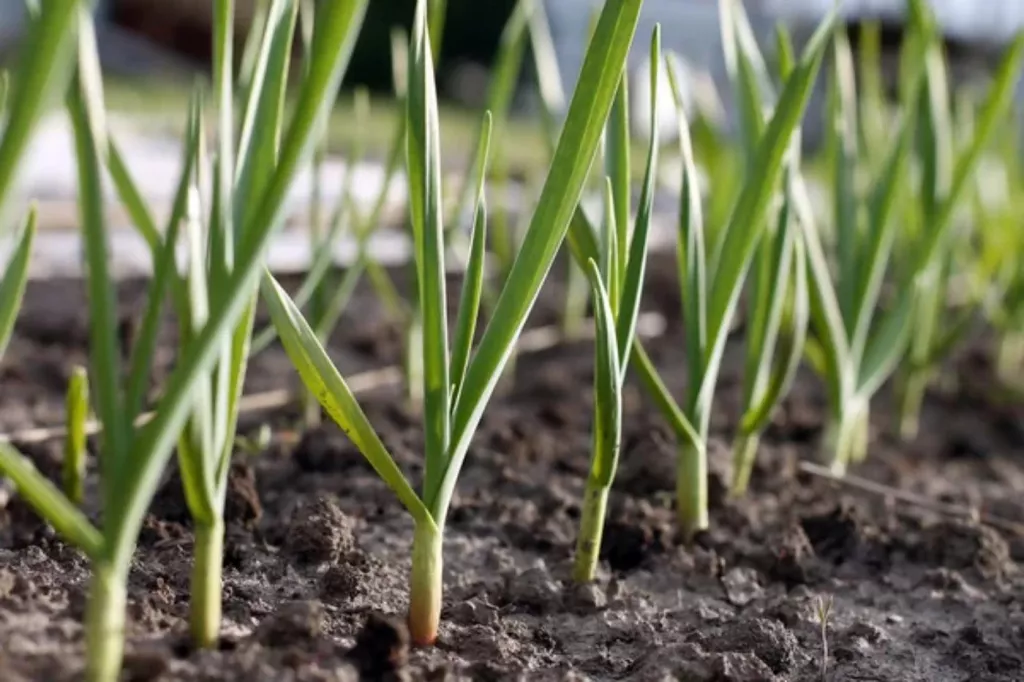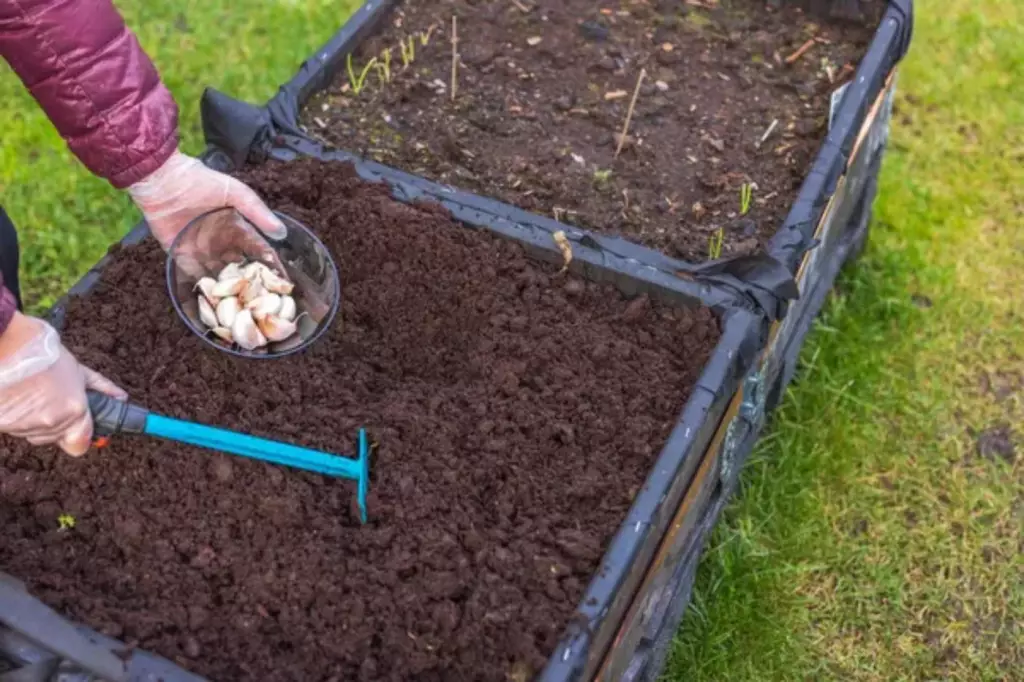How Many Garlic Plants Can You Grow per Acre?
When considering how many garlic plants can fit in an acre, you need to understand the spacing needs and growth habits of garlic. In this article, we will guide you through the essentials of maximizing garlic yield per acre, blending practical farming tips with intriguing agricultural insights.
On average, you can plant about 43,560 to 87,120 garlic plants per acre, assuming a spacing of 6 inches within rows and rows spaced 12 to 24 inches apart. However, the number of garlic plants that can be grown per acre varies depending on the planting method and garlic variety.
If you choose a different garlic variety or tweak your planting strategy, you might be surprised at how much this number can change. Let's take a closer look at how these factors affect garlic planting density.
Summary
- For optimal yields, plant garlic cloves 6 inches apart in rows spaced 10–12 inches apart, as this allows for proper bulb expansion and ease of harvesting.
- Soil quality impacts spacing decisions. Well-drained, nutrient-rich soil with a neutral pH allows for closer spacing of plants.
- Depending on the variety and planting method, you can expect 90,000–150,000 plants per hectare and 4–9 plants per square foot. Wider spacing produces fewer, larger bulbs.
- Profitability depends on yield and market prices. For hard-neck garlic, profits can range from $150,000–$375,000 per acre at optimal yields.

On this page:
Garlic Density per Acre
When planning your garlic farm, the planting spacing and the type of garlic you choose will dictate the number of plants that can be grown on an acre.
Optimal planting density for different varieties of garlic
| Garlic Variety | Minimum Plants per Acre | Maximum Plants per Acre |
|---|---|---|
| Softneck (Artichoke, Silverskin) | 5,000 | 10,000 |
| Hardneck (Rocambole, German Red, Chesnok, Music) | 1,000 | 5,000 |
| Elephant garlic | 435 | 1,000 |
Estimated planting density for soft-neck garlic
Softneck garlic varieties, including popular ones like Artichoke and Silverskin, are well-suited for denser planting. This is because these varieties generally have smaller bulbs compared to hardneck varieties.
However, they compensate for their size with a higher number of cloves per bulb.
- Planting distance: Softneck varieties can be planted closer together, typically about 4 to 6 inches apart in rows. The closer spacing does not adversely affect their growth due to their smaller bulb size.

-
Row spacing: Rows should be spaced about 10 to 14 inches apart. This spacing allows for sufficient airflow and ease of cultivation.
-
Yield considerations: Due to their higher clove count, softneck garlic varieties can offer a more abundant yield per square foot, making them a great choice for maximizing production in limited spaces.
-
Growth characteristics: Softneck garlic is known for its hardiness and is generally easier to grow in a variety of climates. It's also the type most commonly found in grocery stores.
Estimated planting density for hard-neck garlic
Hardneck garlic types such as Rocambole, German Red, Chesnok, and Music are larger and produce fewer cloves per bulb, but these cloves are typically larger. This characteristic necessitates more space for each plant.
-
Planting distance: Hardneck garlic should be planted about 6 to 8 inches apart. This extra space is required to accommodate the larger bulb size.
-
Row spacing: Rows should be spaced 12 to 18 inches apart. This spacing helps to ensure adequate sunlight and nutrient availability for each plant.
-
Yield per plant: While the yield per plant may be higher in terms of clove size, the overall yield per square foot might be less compared to softneck varieties due to the wider spacing.
-
Growth considerations: Hardneck varieties are known for their distinct flavors and are often preferred by chefs. They also produce a central stalk called a scape, which can be harvested and used in cooking.
Estimated planting density for elephant garlic
Elephant garlic, which is actually more closely related to leeks, requires the most space. Its large size is the primary reason for its lower planting density.
-
Planting distance: Elephant garlic should be planted approximately 8 to 10 inches apart. This spacing is crucial to accommodate the substantial size of the bulbs.
-
Row spacing: Rows should be spaced at least 18 inches apart. The wider row spacing is necessary for these large plants and helps with sunlight exposure and nutrient distribution.
-
Growth characteristics: Elephant garlic has a milder flavor compared to true garlic varieties. It's prized for its large, mild cloves which are quite versatile in culinary uses.
-
Yield per plant: Although the planting density is lower, each elephant garlic plant produces a significantly larger bulb, which can be an attractive feature for gardeners looking for larger but fewer cloves.
Spacing Guidelines When Planning a Garlic Farm
When planning your garlic farm, the spacing of the plants is a critical factor that influences the yield per acre. This includes both the distance between cloves within a row and the spacing between the rows themselves.

Garlic density per acre for different spacing plans
To produce larger bulbs, it's common to plant garlic cloves about 6 inches apart in rows that are 10 to 12 inches apart. This spacing facilitates proper root expansion, and access to full sun, and eases the bulb harvest process.
Soil quality also plays a vital role in spacing; well-drained soil with a neutral pH is ideal. Moreover, proper spacing helps with management practices, such as weed control, and reduces the risk of disease, as there's better air circulation around the plants.
For different garlic varieties or specific production goals, this spacing may need to be adjusted. Below is a table that provides a rough estimate of how many plants you can expect to fit per acre based on various spacing configurations:
| Row Spacing (inches) | Clove Spacing (inches) | Plants Per Acre |
|---|---|---|
| 10 | 4 | ~174,240 |
| 10 | 6 | ~130,680 |
| 12 | 4 | ~145,200 |
| 12 | 6 | ~108,900 |
Keep in mind these figures are an approximation and the actual density will also depend on the size of garlic variety and your farming techniques.
Factors such as frost timing also impact planting schedules which can influence spacing decisions. Prioritize planting your garlic at the optimal depth in soil that supports healthy growth to ensure each plant has adequate space to mature.
Factors That Influence Garlic Planting Density
When you're planning to grow garlic, specifically Allium sativum, various factors come into play regarding how densely you can plant your crop.
Soil quality is a crucial factor
Your garlic plants thrive in well-drained, friable soil that's rich in organic matter. This helps bulbs expand properly without becoming misshapen. Conduct a soil test to ensure it has suitable levels of nutrients.
- Nutrients: Garlic requires a high level of nutrients, particularly nitrogen, phosphorus, and potassium.
- Water: Consistent moisture is important, but the soil must not become waterlogged.
To have an idea of what to consider as the best place to plant garlic check out this article.
Climate and planting season can affect planting density
Garlic can be planted in either spring or fall, but the latter typically results in larger yields.
- Spring planting: Allows for more moisture and milder temperatures.
- Fall planting: Requires strategic irrigation to overcome potential dry periods.
Pest and disease management can impact planting density
Your ability to control pests and diseases, like those that commonly affect garlic, will impact the number of plants per acre, as well as how your earnings will look.
- Pests: Regular monitoring and management of pests sustain healthy plant populations.
- Disease: Keeping disease at bay helps maintain the expected planting density.
Potential Yield and Profitability Estimates
Garlic, a popular culinary ingredient found in grocery stores and supermarkets across the United States, can be quite profitable under the right conditions.
Yield and profit estimates from garlic farms
Depending on the variety and your farming practices, your garlic yield can vary significantly. If you're using intensive planting methods and optimal farming conditions, expect the following yield:
| Garlic Type | Estimated Yield (lbs per acre) | Market Price (per lb) | Estimated Profit Range per Acre |
|---|---|---|---|
| Hardneck garlic | 10,000 - 15,000 | $15 - $25 | $150,000 - $375,000 |
| Softneck garlic | 10,000 - 20,000 | $3 - $15 | $30,000 - $300,000 |
Your profit margin hinges on market prices, production costs, and yield. Garlic can fetch a good price, especially if you're near key markets like New York or California, where culinary demand is high.

How Many Garlic Plants per Hectare
When planning how many garlic plants you can grow per hectare, you'll need to account for the specific variety and planting method you intend to use. Different types of garlic, such as softneck and hardneck, have distinct spacing requirements that affect the planting density.
| Garlic Type | Estimated Range of Plants per Hectare |
|---|---|
| Softneck | 120,000 - 150,000 |
| Hardneck | 90,000 - 110,000 |
For softneck garlic, which is often used for braiding, you can typically plant more densely. Assuming you're using a standard row spacing of 30 cm with a plant spacing of 10 cm within a row, you'll get about 120,000 to 150,000 plants per hectare.
In the case of hardneck varieties, which tend to be larger and require more space, your garlic plant count may be lower. With the same row and plant spacing as softneck, expect around 90,000 to 110,000 plants per hectare.
Remember, the closer the spacing, the more plants you'll have, but make sure to give them enough space to avoid overcrowding and ensure healthy growth.
Your management practices and the fertility of your soil will also play a role in determining the optimal plant count.
How Many Garlic Plants per Square Foot
When planning your garlic garden, you should consider the number of plants that can fit into a square foot. This can depend on the garlic variety and spacing guidelines.
Typically, for standard varieties, you'll find that about 4 to 9 garlic plants can be grown per square foot.

- Closer spacing: If you plant with a closer spacing of about 3-4 inches, you can fit up to 9 cloves per square foot.
- Wider spacing: For wider spacing of 6 inches, a square foot can accommodate about 4 cloves.
| Spacing Between Cloves | Plants per Square Foot |
|---|---|
| 3-4 inches | 9 |
| 4-6 inches | 4-6 |
By aligning with these spacing recommendations, you will help ensure that each plant has sufficient space to grow without competition for nutrients or sunlight.
For larger varieties or to encourage bigger bulbs, you might opt for the wider spacing, resulting in fewer plants per square foot but potentially larger garlic heads.



